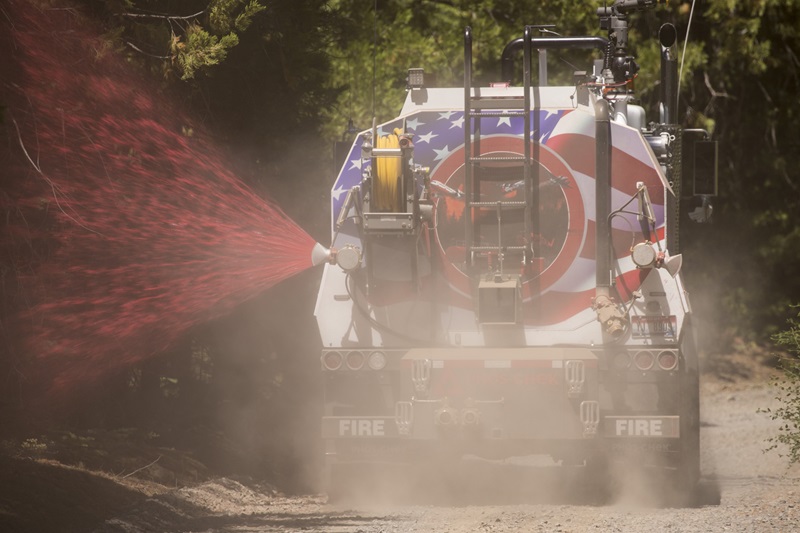Aerial support is critical to the success of wildland firefighting. Aircraft can quickly drop fire retardant to prevent the spread of fire, giving firefighters on the ground more time to contain the blaze and prevent further damage. Unfortunately, there are times when conditions are not favorable for aerial firefighting. Adverse weather, visibility issues, and the lack of available airtankers all present challenges. In these situations, ground-based fire retardant becomes a valuable tool for firefighters to help contain wildfire.
PHOS-CHEK® fire retardant, first approved by the US Forest Service in 1963, is particularly effective in wildland firefighting due to the chemical reaction it undergoes when applied. Long-term fire retardant contains water as a carrier, and when that water evaporates it leaves behind a phosphate residue. When fire comes into contact with vegetation covered in long term fire retardant, the retardant on the outside of the cellulose, grass, and other fuels transforms into a carbon layer that does not support combustion. There will be a short amount of time where the fire will burn, but the intensity is down, slowing the fire’s forward progress to give both ground and air resources more time to extinguish the flames.
Incorporating ground-applied fire retardant into a firefighting toolbox enhances firefighter and public safety. When firefighters use it, they are close to the action and can apply the retardant much more precisely than from the air. During active fires, it isn’t uncommon for utility poles or power lines to catch on fire, which could then fall across a road, cutting off access and creating a dangerous scenario where residents and firefighters can’t escape. Applying retardant in those areas can help prevent this while quickly and safely reinforcing ingress and egress routes. Additionally, the retardant can help keep the power on for local communities. Over the past decade, we have worked with utilities to apply retardant around substations and on power poles to prevent damage, a task that can be done much quicker and more precisely compared to dropping an entire load of retardant from aircraft.

The cost effectiveness of ground-based fire retardant is another important consideration for fire departments. Ground application eliminates expenses associated with aircraft, flight hours, and pilot time. These applications also typically require less retardant since it can be applied directly where it is needed.
Aside from its use in active wildfires, ground-based retardant is being applied proactively by utilities, railways, transportation companies, insurance carriers, and private and public landowners to protect property from wildfire. With high durability, retardant can be placed on fuels well in advance of fire conditions and will continue to protect surfaces from wildfire through the dry season. In 2023, we applied PHOS-CHEK along a highly trafficked 30-mile stretch of I-84 outside Boise, Idaho. Wildfires frequently breakout here—hundreds during the year—due to dry and windy conditions. After we applied the retardant, however, there were no more fire starts the rest of the year.

We have more than a decade of successful ground applications, including photos of homes, businesses, utility poles, and other structures saved by ground-applied fire retardant. Despite its well-documented benefits, it is still not widely adopted by fire departments due to a lack of knowledge about the technology and its availability. It is critical that ground-applied retardant be integrated into every incident command system (ICS) with knowledgeable personnel to manage these resources. Today, we have ground application resources available to order on our current government contracts, making ground-applied fire retardant as easy to order as an aerial retardant tanker throughout California, and we are continuing to work with other agencies to follow suit. To learn more about incorporating this technology into your firefighting strategy, please
reach out for further information.